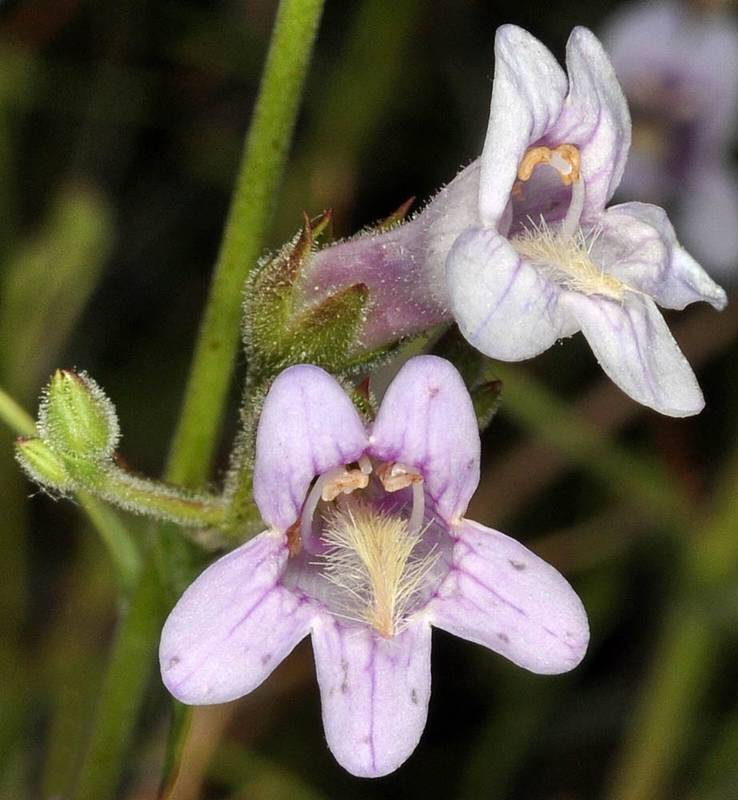Penstemon ovatus
Penstemon triphyllus
egg-leaf beardtongue, broad-leaved penstemon
whorled beardtongue
Basal leaves opposite, clustered, petiolate, with ovate to sub-cordate blade up to 10 cm. long and half as wide, about equaling the petiole, serrate, hairy like the stem, especially along the mid-vein beneath;
cauline leaves sessile and clasping, more sharply serrate, nearly as large, but more broadly oblong, the upper ovate.
Leaves irregularly arranged, many ternate or whorled, others opposite or single, glabrous or puberulent, all cauline, the lowermost reduced, the others numerous, sessile from a narrow base, linear or narrowly lance-elliptic, up to 5 cm. long and 1 cm. wide, irregularly and sharply toothed.
Inflorescence large and open, strongly glandular-hairy;
calyx 3-5 mm. long, broadly lanceolate, with parallel veins;
corolla blue, 15-22 mm. long, glandular-hairy on the outside, the raised portion of the lower petal pale blue and hairy;
corolla strongly bilabiate, the lower lip much the longer;
pollen sacs 0.8-1.1 mm. long, fully dehiscent and becoming opposite, nearly glabrous;
staminode bearded toward the recurved tip.
Inflorescence a loose panicle, often leafy-bracteate below;
calyx 4-6 mm. long, the 5 segments green or purplish, entire, often unequal;
corolla blue-lavender to light purple-violet, 13-19 mm. long, weakly bilabiate, glandular-hairy outside and glabrous within, the upper lip cleft more than half its length;
anthers 0.9-1.3 mm. long, permanently horseshoe-shaped, the pollen sacs saccate and indehiscent below;
staminode exerted, long-bearded half its length.
Capsule 4-6 mm. long.
Capsule 4-6 mm. long



